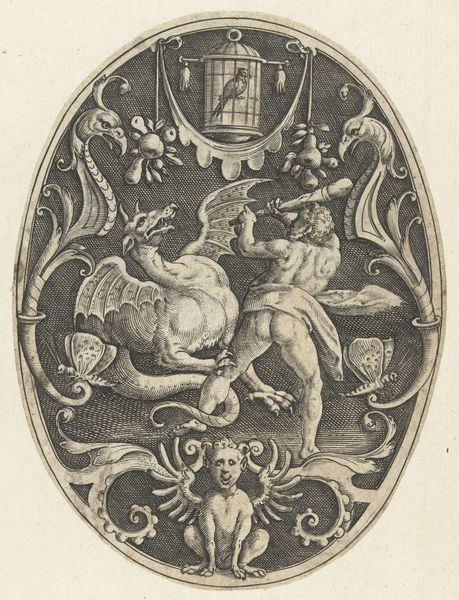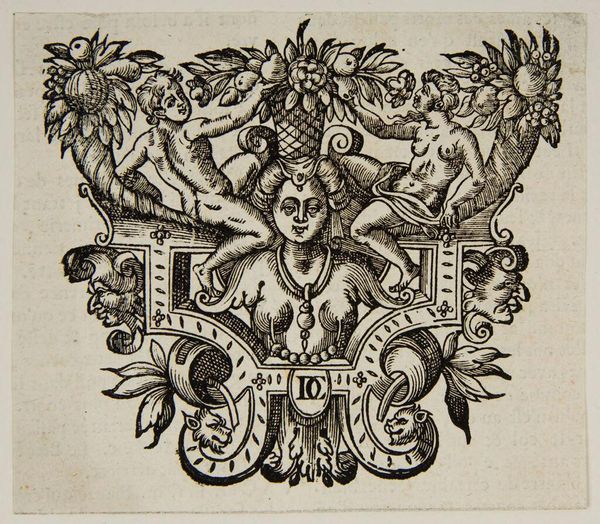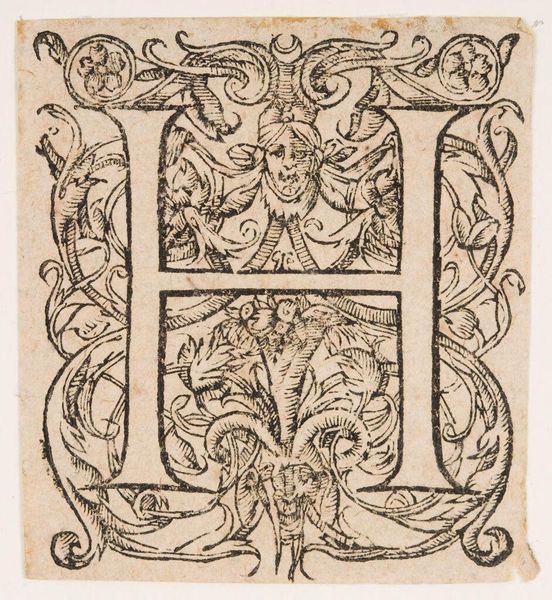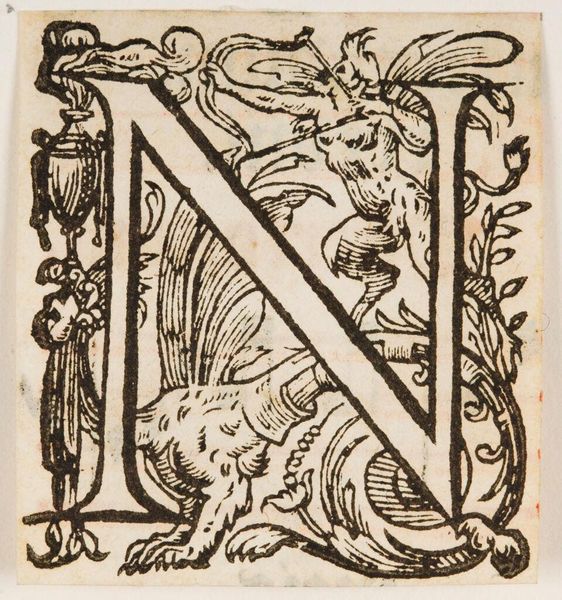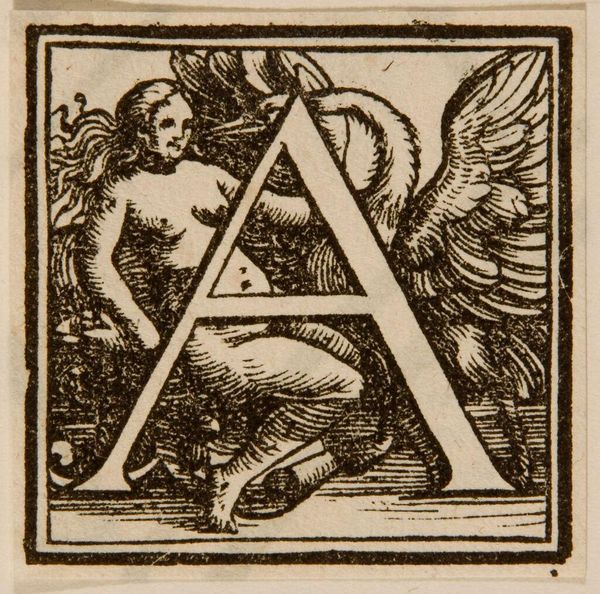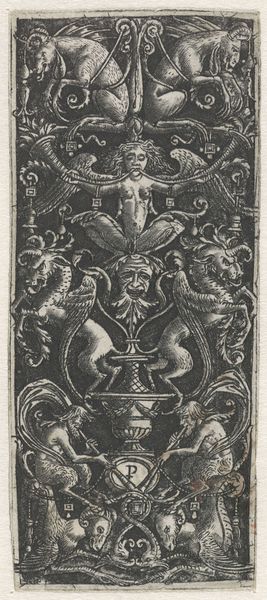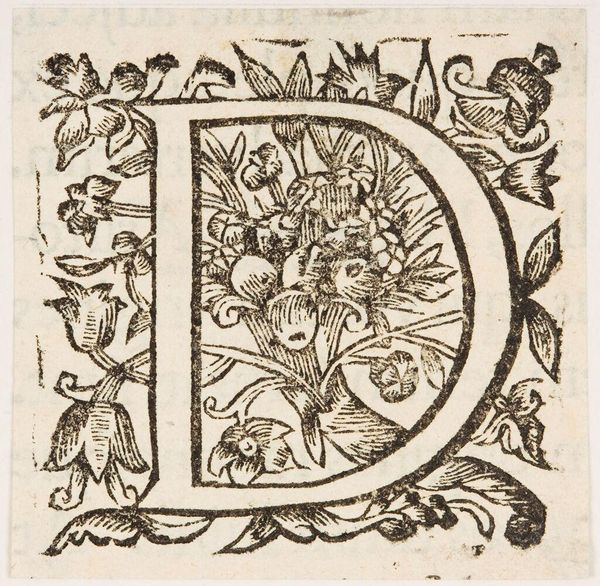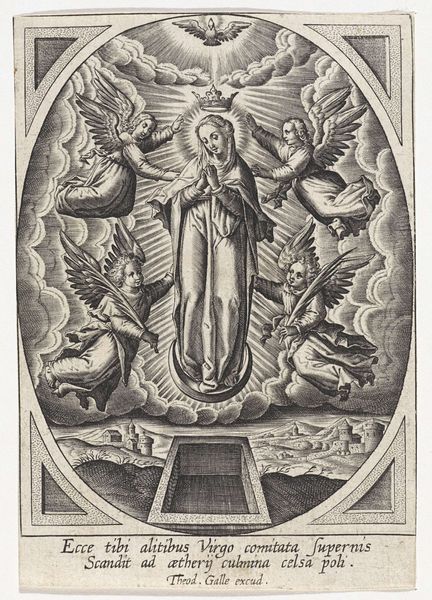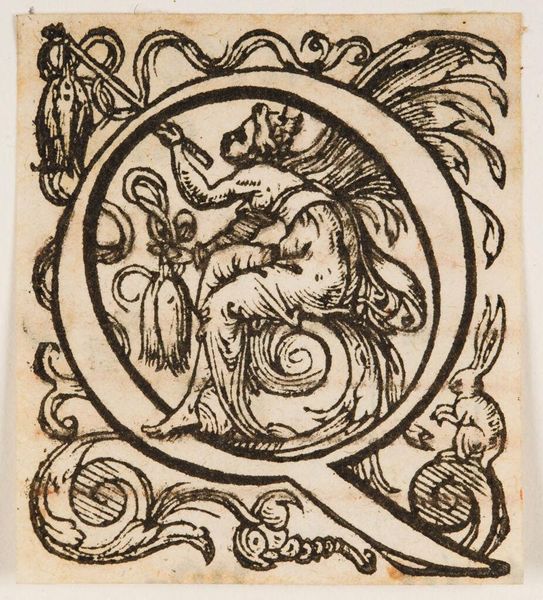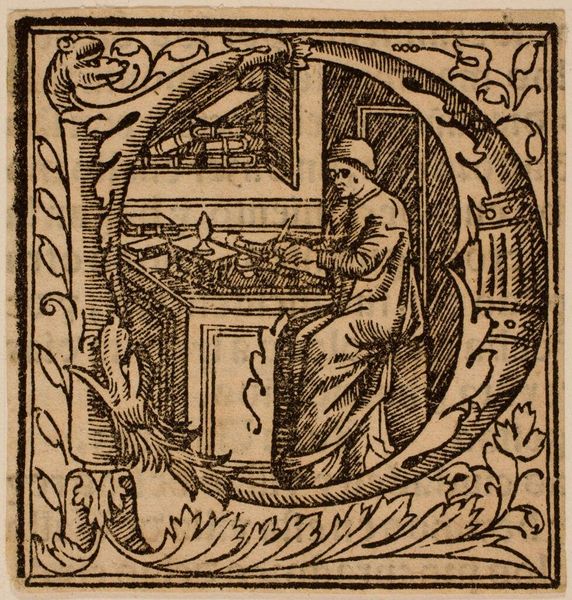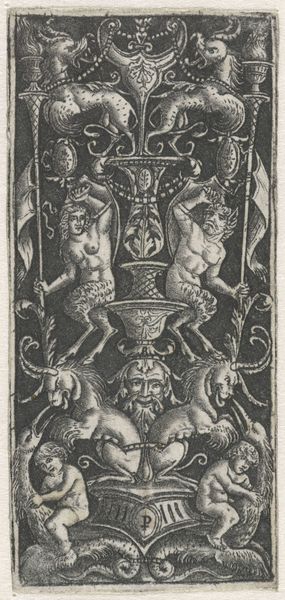
#
light pencil work
#
pencil sketch
#
old engraving style
#
sketch book
#
personal sketchbook
#
pen-ink sketch
#
pen work
#
sketchbook drawing
#
pencil work
#
sketchbook art
Dimensions: height 44 mm, width 33 mm
Copyright: Rijks Museum: Open Domain
Curator: What we have here is a drawing from Hendrick Goltzius, likely from sometime between 1579 and 1584, titled "Wapen, vastgehouden door een engel," which translates to "Coat of Arms, Held by an Angel." Editor: The intricate hatching gives it a formal quality, but at the same time the composition feels quite energetic. Curator: Energetic is a great descriptor. I think that speaks to the penmanship at play, likely conceived as a preliminary sketch in preparation for printmaking. Consider that engraving work demanded specialized skills developed through apprenticeships. Editor: That’s interesting—framing it in terms of skilled labor shifts the dialogue away from pure aesthetics, pushing us to reflect on the social realities involved. After all, artistic production then was far more deeply embedded in social and political power structures. Curator: Exactly! Think about the role of Goltzius' workshop; they were generating designs for prints circulated throughout Europe. How do we reconcile high art and reproductive technologies when labor is commodified? This pushes boundaries regarding originality. Editor: Precisely. What do you make of the symbolism of this emblem? The gate, lion, and griffin point to issues of territory, sovereignty, and defense. Given that the Netherlands at the time was embroiled in revolt against Spanish rule, wouldn't we assume these symbols refer to state power during violent conflict? Curator: Absolutely. And situating this work within that specific political and social upheaval emphasizes the intertwined histories of art and statehood. The artist, regardless of his personal political beliefs, would inevitably be engaged in disseminating ideas regarding authority and governance. The figure of the angel presiding over this potent iconography further sanctifies political order, I suppose. Editor: Right, art is rarely divorced from ideology. That angel could also signify Dutch aspirations for divine protection and intervention as they sought liberation. Ultimately, Goltzius' drawing is rich, encapsulating themes surrounding material realities, production, war, religion, and nationhood. Curator: This artwork encapsulates production as much as nationhood, I suppose, a wonderful look into the rich context it arose from. Editor: Precisely. It highlights both artistic craft and a broader negotiation for self-determination.
Comments
No comments
Be the first to comment and join the conversation on the ultimate creative platform.
